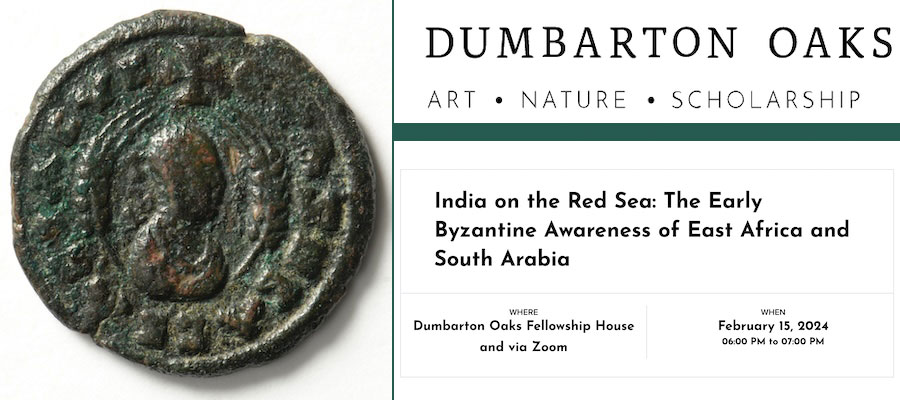India on the Red Sea: The Early Byzantine Awareness of East Africa and South Arabia, lecture by Benjamin Garstad (MacEwan University), Dumbarton Oaks and Zoom, February 15, 2024, 6:00–7:00 pm
From the late third and early fourth centuries we find a number of Greek and Latin texts that refer to a country at the southern reaches of the Red Sea as India and its inhabitants as Indians — in regions that had once been known uniformly as Ethiopia or Arabia. This novel usage recognized the rise of the kingdom of Axum in Abyssinia, as well as Himyar, her neighbor and rival across the straits, as a major regional power and the growing importance of the Red Sea to the Roman Empire as an avenue of trade, but also as a theatre for carrying on conflicts by proxy with the old enemy, Persia. Calling them Indians distinguished the Axumites and the Himyarites from their neighbors, perhaps in terms of language and appearance, but undoubtedly in terms of politics and religious adherence. The negus in Axum and the emperor in Constantinople tended to enjoy friendly relations and the Axumites, unlike the Nilotic peoples who continued to raid the Province of Egypt, were early converts to Christianity. The designation of Abyssinians and Yemenites as Indians appears to have originated with a narrative of primeval migration from the Indus to the headwaters of the Nile, presented by Philostratus as a past-life recollection in the Life of Apollonius and integrated by Eusebius of Caesarea into his Chronicle. It thus gives us a fascinating insight into the ways that people in the late antique Mediterranean generated geographic and ethnographic knowledge and came to understand new and exotic people in the world around them.
Benjamin Garstad is Professor of Classics MacEwan University in Edmonton, Alberta.
Advance registration required.
